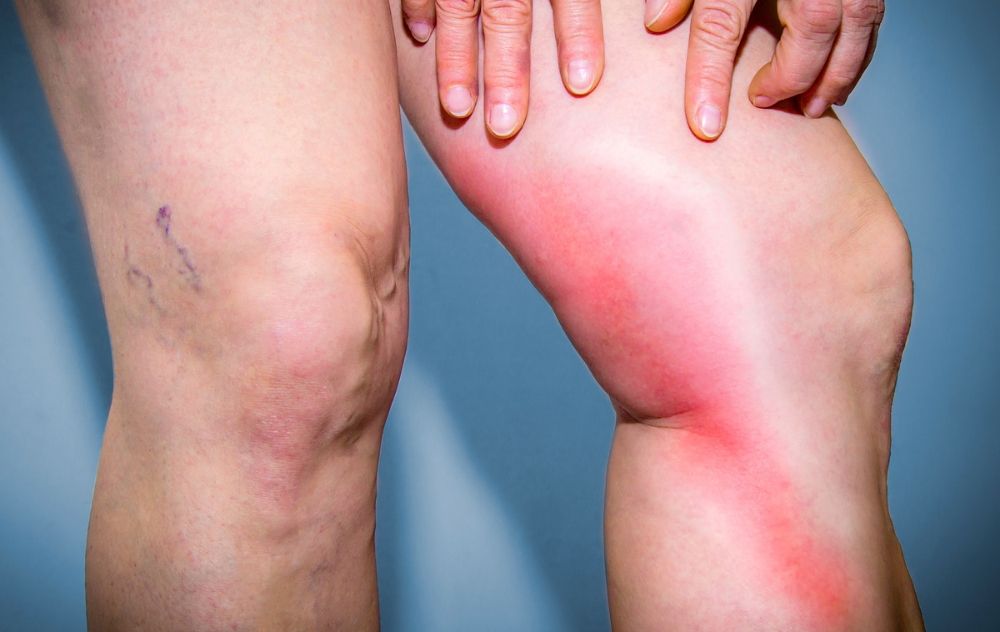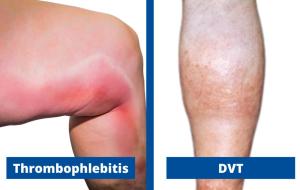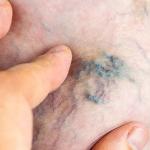
Phlebitis refers to inflammation of a vein, usually caused by irritation, injury, or the formation of a blood clot. This condition often appears in the legs and is frequently linked to poor circulation, venous reflux, or underlying vein disease. Many individuals first notice redness, burning, swelling, or tenderness along a visible vein — symptoms commonly seen across the category of vein disease symptoms.
Concerned You May Have Phlebitis?
Book Your Ultrasound & Vein Evaluation
What Is Phlebitis?
Phlebitis occurs when a vein becomes inflamed, often appearing as a warm, red, painful, or firm cord beneath the skin. It is also commonly called thrombophlebitis, superficial thrombophlebitis, or superficial venous thrombosis.
Phlebitis affects both superficial veins and deeper venous structures, though superficial veins are more commonly involved. Because inflammation can develop near varicose veins, similar to the burning sensations described in burning varicose veins, early recognition is essential.
Symptoms of phlebitis include:
- Swelling
- Pain or tenderness
- Warmth
- Red or irritated skin (not always present)
Individuals who develop one-sided swelling or heat in the leg may also experience similar symptoms described in cases of swelling on one side of the body.
If these symptoms occur, especially suddenly, a specialist evaluation is recommended.
SCHEDULE A PHLEBITIS CONSULTATION
What Causes Phlebitis?
Phlebitis usually develops when a blood clot triggers inflammation inside a vein. Blood clots are more likely to form when:
- Blood flow slows (stasis)
- Vein walls become injured
- Valves become damaged from vein disease
- Pressure inside the veins increases
Underlying chronic venous insufficiency (CVI) — where vein valves malfunction and blood pools in the legs is a common contributing factor.
Other risk factors include:
- Smoking
- Birth control pills or estrogen therapy
- Prolonged sitting or lack of movement
- Family history of clots
- Pregnancy or recent childbirth
- Obesity
- Trauma or fractures involving the legs
Circulatory conditions that reduce blood flow can also create similar burning or aching sensations, such as those associated with poor circulation.
Deep Vein Thrombosis (DVT) vs. Superficial Thrombophlebitis
The primary difference lies in where the clot forms.
Superficial Thrombophlebitis
- Occurs in veins near the skin’s surface
- Often develops around varicose veins
- May cause hard, tender lumps under the skin
- Painful but typically not life-threatening
Untreated varicose veins can increase the risk of complications such as superficial thrombophlebitis.
Deep Vein Thrombosis (DVT)
- Affects deep veins, typically in the leg
- Causes swelling, redness, warmth, and tenderness
- Can occur silently until symptoms suddenly worsen
- Can progress to pulmonary embolism, a medical emergency
People with vein pain or heaviness often report similar discomfort described in heavy legs and nighttime pain
Diagnostic Comparison: Phlebitis vs. DVT vs. Cellulitis
| Condition | Pain Pattern | Skin Changes | Key Signs | Urgency |
| Superficial Thrombophlebitis | Localized pain, firmness | Red, warm, tender vein | Lump under skin | Medical evaluation |
| Deep Vein Thrombosis (DVT) | Deep ache or burning | One-leg swelling, warmth | Pain with walking | Emergency care |
| Cellulitis | Burning, stinging | Rapid redness, swelling | Fever, fatigue | Urgent treatment |
When Phlebitis Becomes Serious
Superficial thrombophlebitis is often treatable, but there is a small risk that the clot can extend into a deeper vein. When this occurs, the superficial clot can progress to DVT.
Early warning signs should never be ignored, especially if symptoms begin suddenly or worsen quickly.
The symptoms of phlebitis often overlap with general signs of vein disease, making ultrasound evaluation essential.
Diagnosis and Treatment of Phlebitis
Your doctor will begin with a physical examination, but a vascular ultrasound is required to confirm whether the clot is superficial or within the deep venous system. In one study, 23% of patients with phlebitis also had DVT, underscoring the importance of imaging.
Additional diagnostic tools may include:
- Doppler ultrasound for assessing venous blood flow
- Venography for detailed imaging of deep veins
Treatment may include:
- Compression stockings
- Warm compresses
- Leg elevation
- Exercise to improve circulation
- Blood thinners (if clot risk is high)
While conservative measures help with pain and inflammation, treating the underlying cause often varicose veins, reduces the risk of recurrence.
Varicose veins are responsible for up to 88% of superficial thrombophlebitis cases, which is why many patients explore treatment options that directly address venous insufficiency
Treatment Options for Phlebitis
Treating underlying vein disease can help prevent future inflammation and lower the risk of clot extension. Minimally invasive treatments include:
- Endovenous Laser Therapy (EVLT)
- Radiofrequency Ablation (RFA)
- ClariVein®
- Varithena™ Foam Treatment
- VenaSeal™ Glue Treatment
- Ultrasound-guided sclerotherapy
- Visual sclerotherapy
Explore Your Options at USA Vein Clinics
USA Vein Clinics offers minimally invasive, outpatient treatments performed by board-certified specialists. Most procedures take 15–30 minutes and allow patients to return to normal activities with minimal downtime.
Insurance verification is included during scheduling, and many treatments are covered.
Medically Reviewed By
Dr. Yan Katsnelson is the founder and CEO of USA Vein Clinics. He is a highly skilled cardiac surgeon who completed a fellowship at the Brigham and Women’s Hospital, Harvard School of Medicine, in Boston, MA. His clinical area of expertise includes minimally invasive procedures to treat vein and vascular diseases. Dr. Katsnelson has established himself as a strong advocate for accessible, affordable, and compassionate healthcare services.






